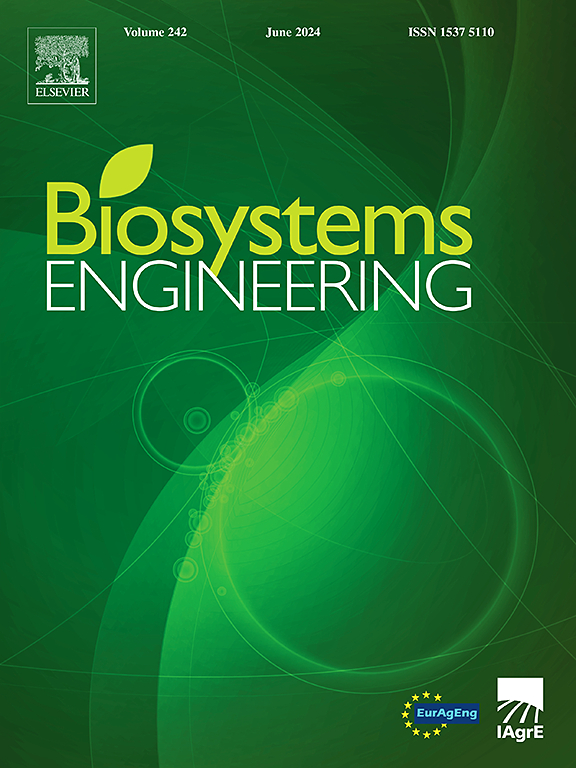降雨条件下土体演化的机器学习方法在土体布局微地形变化数值模拟中的应用
IF 5.3
1区 农林科学
Q1 AGRICULTURAL ENGINEERING
引用次数: 0
摘要
土壤表面粗糙度(SSR)是由耕作操作形成的,并随风化而演变。它与地貌过程和土壤肥力有关。因此,它是各种模型的输入,也是许多研究的对象。粗糙表面的数值生成是一种替代测量的方法,这可能很麻烦。本文提出了一种方法,以数值方式产生的土壤表面类似于种子床的粗糙度,已演变为雨水。由于SSR与土块大小分布有关,其原理是将建模的土块设置在平面上,作为该表面的一级近似。设计了一项试验,通过在松散土壤的近水平表面设置预先筛选的土块,然后在降雨模拟器中对表面进行降雨,以获得可控的表面粗糙度。利用激光扫描仪记录地表各状态的数字高程模型(dem),监测降雨条件下土块的演变。在表面的每个状态下,对块进行分割和匹配,形成单个块的数据库。降雨下土块的演变是由机器学习模拟的。一组dem用于学习,另一组用于测试,并应用了几个指标。结果表明,该模型具有较好的鲁棒性。这个简单的表面表示捕获了表面的主要属性。小尺度表面对于各种应用是有用的,比如粗糙的表面散射,更普遍的是,土壤表面是一个输入的建模。本文章由计算机程序翻译,如有差异,请以英文原文为准。
Machine learning of clod evolution under rain for numerical simulation of microtopographic variations by clod layout
Soil surface roughness (SSR) is shaped by tillage operations and evolves with weathering. It is related to geomorphologic processes and to soil fertility. Thus it is an input of various models and the object of many studies. Numerical generation of rough surfaces is an alternative to measurement, which can be cumbersome.
This paper proposes a way to numerically generate soil surfaces resembling seedbeds with roughness that have evolved due to rain. As SSR is related to clod-size distribution, the principle is to set modelled clods on a planar surface, as a first approximation of the surface. An experiment was designed to get controlled surface roughness by setting pre-sieved clods on a nearly horizontal surface of loose soil, and then subjecting the surfaces to rainfall events performed by a rainfall simulator. Digital elevation models (DEMs) of each state of the surfaces were recorded by laser scanner to monitor the evolution of clods under rain. Clods were segmented and matched to form a data base of individual clods at each state of the surface. The evolution of clods under rain was modelled by Machine Learning. A set of DEMs was used for learning, the other for test, and several metrics were applied. Obtained results show the robustness of the model. This simple surface representation captures the main properties of the surface. Small scale surface is useful for various applications, such as rough surface scattering, and more generally, modelling where soil surface is an input.
求助全文
通过发布文献求助,成功后即可免费获取论文全文。
去求助
来源期刊

Biosystems Engineering
农林科学-农业工程
CiteScore
10.60
自引率
7.80%
发文量
239
审稿时长
53 days
期刊介绍:
Biosystems Engineering publishes research in engineering and the physical sciences that represent advances in understanding or modelling of the performance of biological systems for sustainable developments in land use and the environment, agriculture and amenity, bioproduction processes and the food chain. The subject matter of the journal reflects the wide range and interdisciplinary nature of research in engineering for biological systems.
 求助内容:
求助内容: 应助结果提醒方式:
应助结果提醒方式:


